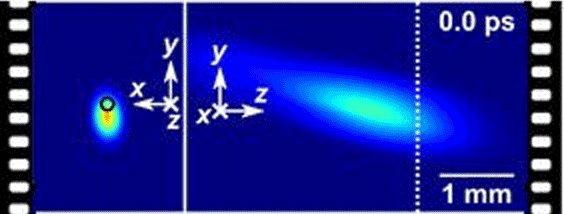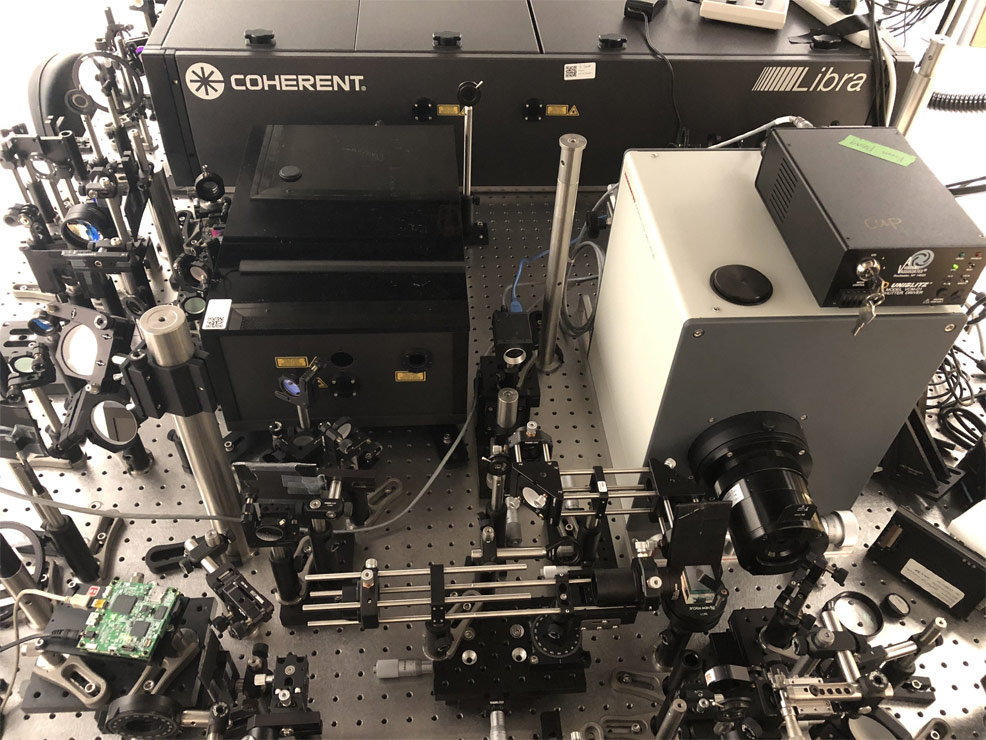
13th October 2018 World's fastest camera: 10 trillion frames per second The world's fastest camera, able to film 10 trillion frames per second, has been announced by researchers from Caltech and the Institut national de la recherche scientifique (INRS) in Quebec, Canada.
Way back in 2011, we reported on a system developed at MIT that allowed movies to be captured at 1 trillion frames per second (fps). Now, researchers in Canada and the U.S. have achieved an order of magnitude increase over that earlier breakthrough, with a camera that records at 10 trillion fps. The movies can be produced with 450×150 pixel resolution and a sequence length of 350 frames. For comparison, the "super slow-mo" of the Samsung Galaxy S9 is 960 fps or approximately 10 billion times less. Lihong Wang, Professor of Electrical Engineering and a director at Caltech Optical Imaging Laboratory (COIL), explains the design process: "We knew that by using only a femtosecond streak camera, the image quality would be limited. So to improve this, we added another camera that acquires a static image. Combined with the image acquired by the femtosecond streak camera, we can use what is called a Radon transformation to obtain high-quality images while recording ten trillion frames per second." The first time it was used, the camera broke new ground by capturing the temporal focusing of a single femtosecond laser pulse in real time, as shown in the GIF animation above. This process was recorded in a sequence of 25 frames taken with an interval of 400 femtoseconds and detailed the light pulse's shape, intensity, and angle of inclination. The ultra-fast camera will have a number of biomedical, materials science and other applications and "represents a fundamental shift, making it possible to analyse interactions between light and matter at an unparalleled temporal resolution," according to INRS. Jinyang Liang, Assistant Professor at INRS and co-author of the study, believes there is even greater potential to come: "We already see possibilities for increasing the speed to up to one quadrillion (1,000 trillion) frames per second," he says. Camera speeds of that magnitude are sure to offer insight into as-yet undetectable secrets of the interactions between light and matter.
Comments »
If you enjoyed this article, please consider sharing it:
|








